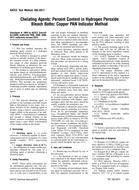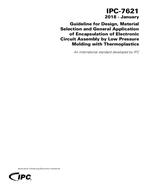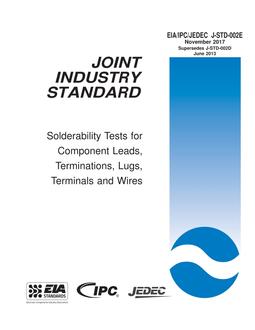AATCC 185-2011
$42.00
Chelating Agents:Percent Content in Hydrogen Peroxide Bleach Baths; Copper PAN Indicator Method (Reaffirmed)
standard by American Association of Textile Chemists and Colorists, 2006
Description
1. Purpose and Scope
1.1 This test method measures the chelating agent content in a hydrogen peroxide bleach solution.1.2 The method is designed to permit routine or periodic titration of the peroxide saturator section of a plant preparation range, or other prepared peroxide bleach solutions, to determine the concentration of chelating agent present.1.2 The method is restricted to chelating agents based on ethylenedianietetraacetic acid (EDTA), N-hydroxyethylenediamenetriacetic acid (HEDTA), and diethylenetriaminepentaacetic acid (DTPA). This includes any proprietary products ( referred to herein as “product”) containing possible multiple ingredients, one or more of which may be chelating agents.
2. Principle
2.1 The percent chelating agent or product in the hydrogen peroxide bleach bath is determined in two steps: first, a direct titration of the chelating agent or product using a known concentration of copper sulfate in the presence of an indicator (PAN, 1-(2-pyridylazo)-2-naphthol), and second, a similar titration of the bleach solution containing the chelating agent using a more dilute concentration of copper sulfate as the titrant.
Product Details
- Published:
- 2006
- Number of Pages:
- 2
- File Size:
- 1 file , 190 KB
- Note:
- This product is unavailable in Ukraine, Russia, Belarus



